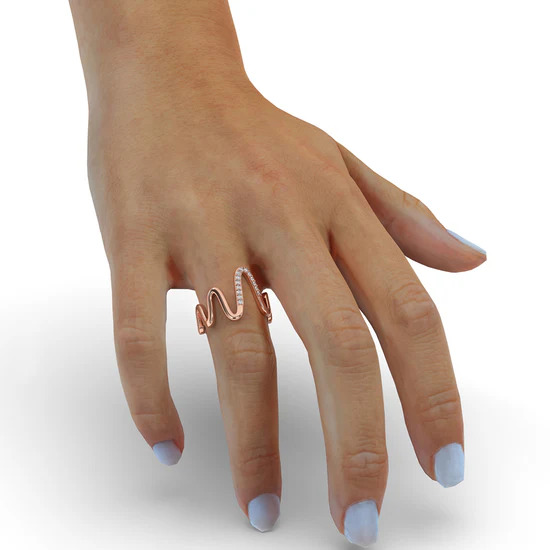
When it comes to selecting a wedding ring, one of the most significant choices you’ll make is the setting. The setting not only affects the ring’s aesthetic appeal but also influences its durability and how it complements the center stone. This comprehensive guide will help you understand the various types of wedding ring settings, their features, and how to choose the best one for your needs.
What is a Wedding Ring Setting?
A wedding ring setting refers to how the gemstones, typically diamonds, are mounted onto the ring band. The setting plays a crucial role in the overall design and functionality of the ring, influencing how the stone is displayed and protected.
At Carat Diamonds, we offer an exquisite collection of Wedding Rings that symbolize the eternal bond of love and commitment. Crafted with precision and care, our wedding bands are available in a variety of designs, from timeless classics to modern styles. Whether you prefer the elegance of platinum or the warmth of gold, our rings are designed to reflect your unique love story. With ethically sourced, lab-grown diamonds, our wedding rings not only shine with brilliance but also uphold sustainable values. Celebrate your special day with a ring that embodies love, beauty, and a lifelong promise.
Types of Wedding Ring Settings
1. Prong Setting
The prong setting is one of the most popular choices for engagement rings. It involves small metal claws (prongs) that hold the diamond or gemstone in place, allowing maximum light to enter the stone and enhancing its brilliance.
Pros:
- Maximizes the stone’s visibility.
- Creates a classic and timeless look.
- Easy to clean.
Cons:
- The prongs can snag on clothing.
- Stones may be more prone to loosening.
2. Bezel Setting
In a bezel setting, the stone is surrounded by a metal rim that holds it securely in place. This design is known for its modern aesthetic and offers excellent protection for the stone.
Pros:
- Offers superior protection for the stone.
- Less likely to snag on fabrics.
- Suitable for active lifestyles.
Cons:
- May limit the amount of light that enters the stone.
- Can appear less traditional.
3. Halo Setting
A halo setting features a center stone surrounded by smaller stones, creating a “halo” effect. This design enhances the overall sparkle and can make the center stone appear larger.
Pros:
- Increases the ring’s overall brilliance.
- Provides a dramatic and luxurious look.
- Can be cost-effective by using smaller stones.
Cons:
- May require more maintenance due to the smaller stones.
- Can feel bulkier on the finger.
4. Channel Setting
In a channel setting, small stones are set in a groove between two metal rails. This setting is often used for wedding bands and can create a sleek, modern appearance.
Pros:
- Provides a smooth surface with no exposed prongs.
- Stones are secure and less likely to be damaged.
- Excellent for daily wear.
Cons:
- Difficult to resize.
- Can be challenging to clean.
5. Pavé Setting
The pavé setting features multiple small stones set closely together, creating a continuous surface of sparkle. This style is often used to enhance the band of the ring.
Pros:
- Creates a stunning, glittering effect.
- Can add extra brilliance without a large center stone.
Cons:
- More intricate cleaning may be required.
- Stones can loosen over time.
6. Tension Setting
In a tension setting, the stone is held in place by the pressure of the metal band itself. This modern design gives the appearance of the stone floating above the band.
Pros:
- Unique and contemporary look.
- Maximizes light exposure for the stone.
Cons:
- Requires precise engineering; may not be suitable for all stones.
- More vulnerable to damage.
7. Bar Setting
The bar setting is similar to the channel setting but features vertical bars that separate the stones. This design allows more light to enter and is often used for wedding bands.
Pros:
- Provides excellent visibility of the stones.
- Creates a distinctive and modern aesthetic.
Cons:
- May require careful cleaning.
- Stones can be less secure than in other settings.
Factors to Consider When Choosing a Setting
When selecting a wedding ring setting, consider the following factors:
1. Lifestyle
Your lifestyle plays a significant role in determining the right setting. If you lead an active lifestyle or work with your hands, opt for settings that offer more protection, such as bezel or channel settings.
2. Personal Style
Consider your personal style and aesthetic preferences. Do you prefer classic and timeless designs, or are you drawn to modern and unique styles? Your wedding ring should reflect your individuality.
3. Durability
Think about the durability of the setting. Some settings are more prone to wear and tear than others. If you plan to wear your ring every day, choose a setting that will withstand daily use.
4. Stone Shape and Size
The shape and size of your center stone can influence the choice of setting. For example, larger stones may benefit from a secure prong or bezel setting, while smaller stones can shine in pavé or halo settings.
5. Budget
Different settings come with varying costs. Some intricate designs may be more expensive due to the amount of labor involved. Determine your budget early on to help narrow down your options.
Conclusion
Choosing the right wedding ring setting is a personal decision that combines aesthetics, practicality, and individual style. With numerous options available, it’s essential to take the time to understand each type of setting, its benefits, and how it complements your center stone. Ultimately, the perfect setting will not only enhance the beauty of your ring but also fit seamlessly into your lifestyle and personal style, making your wedding ring a cherished symbol of your love for years to come.